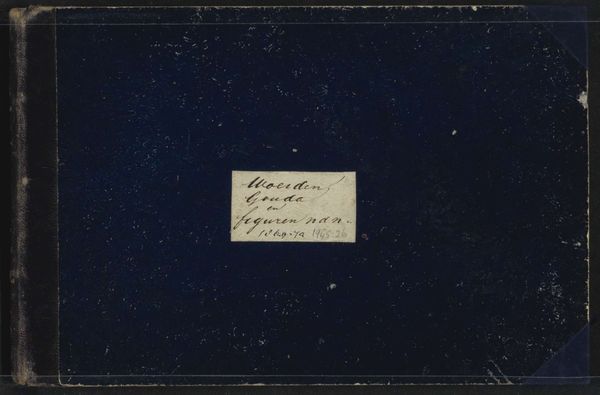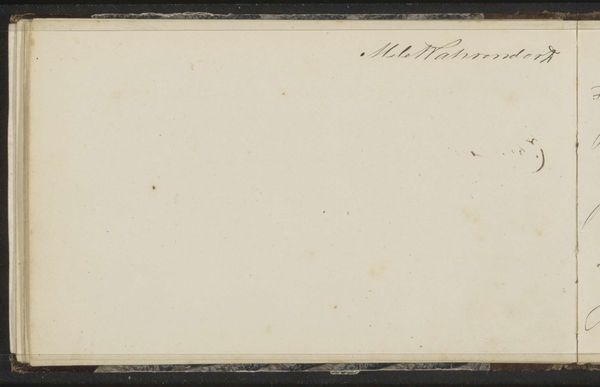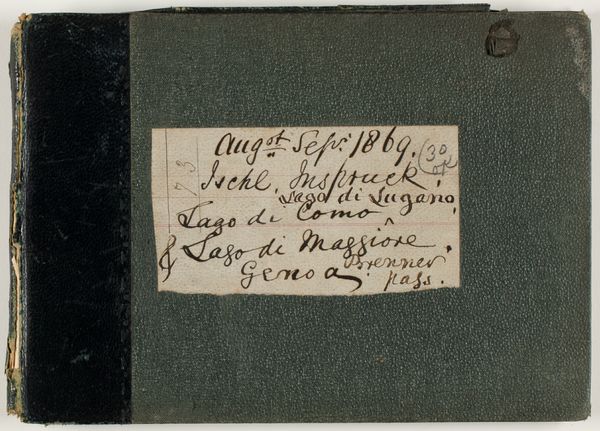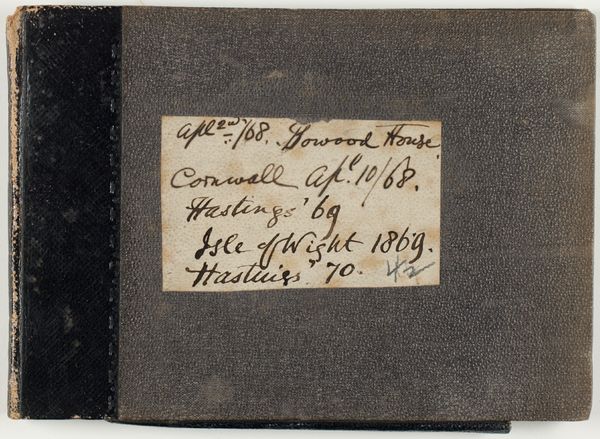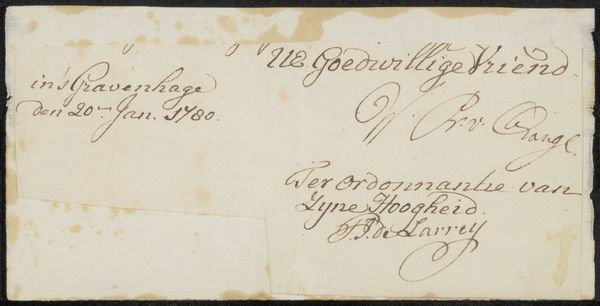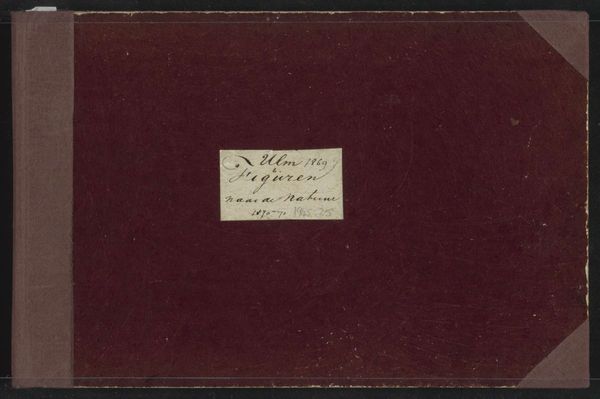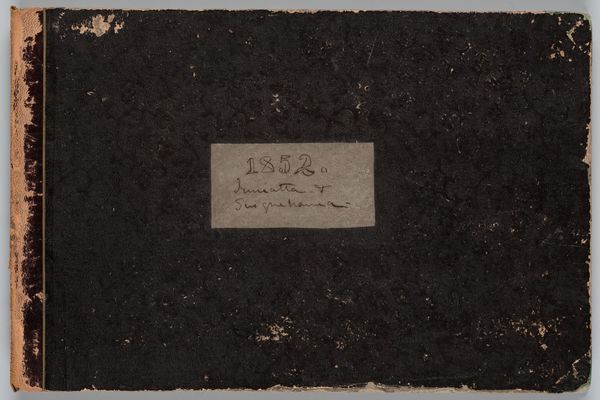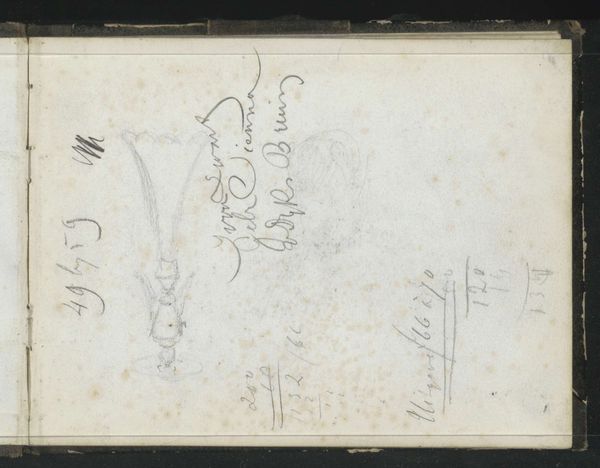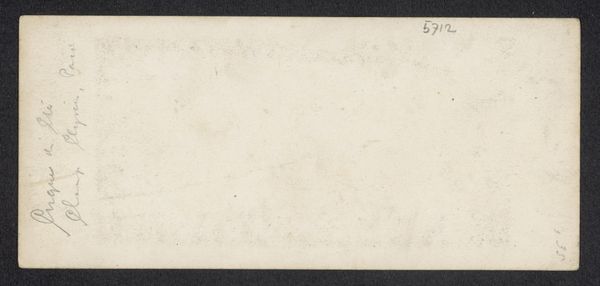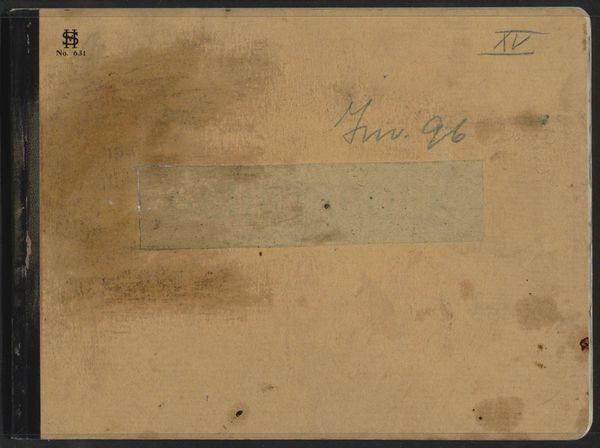
drawing, mixed-media, paper, architecture
#
drawing
#
mixed-media
#
paper
#
architecture
Dimensions: height 158 mm, width 240 mm, thickness 22 mm, width 484 mm
Copyright: Rijks Museum: Open Domain
Curator: A peek into history, literally. Here we have Cornelis Springer’s sketchbook with 91 leaves, created sometime between 1846 and 1882. It’s a medley of drawing and mixed media on paper. What do you see in this enigmatic cover? Editor: Dark leather. Almost funereal. With this oddly decorative label and a title in an unknown script. Feels like a long-forgotten grimoire more than an artist's companion. Intriguing, but not exactly welcoming. Curator: It is quite serious, isn’t it? Consider Springer's place in the Dutch art world—known for his architectural paintings, especially of cityscapes. This sketchbook is likely filled with the nuts and bolts that constructed those grand paintings, a tool to create civic pride. Editor: So it’s less "dark arts," more architectural sketches? I like the contrast; the plain dark binding, yet those fancy corner pieces. The City of Amsterdam probably put as much ornate filigree on its legal contracts. Curator: Precisely. And you're spot on. The exterior whispers about the public role of art, then, whereas the private sketches inside show us a more immediate response, an artist in his element. I often think sketchbooks like these allow artists a sort of visual note-taking, raw responses. Editor: It begs the question of what treasures are concealed inside. A little disappointing perhaps from the outside, no dazzling colors here. Just that somber book. But maybe, that contrast only enhances the impact and the raw magic of the interior content, where he set loose those architectural reveries we come to expect from the man. Curator: Right. It reminds us how constructed our sense of artistry actually is. We often are prepared only for ready to receive masterpieces, yet these tools show the grinding away, a day by day pursuit. And a beautiful object itself; paper, pencil, all transformed through sheer intention. Editor: And now it's forever on view at the Rijksmuseum. Which just underlines the role that these collections, and the social histories behind these materials are so vital to see. It goes well beyond just seeing art alone, it's so essential that the entire setting must become alive. Thanks for making the ordinary sparkle!
Comments
No comments
Be the first to comment and join the conversation on the ultimate creative platform.
